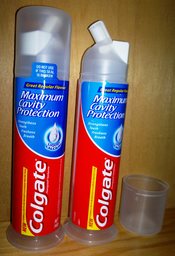Problem Statement
The aim of this report is to analyze the two different launch strategies (as a niche or a mainstream product) for Colgate Palmolive's new toothbrush, Precision, and choose the one that is the most suitable in the face of the market competition and consumer needs. The report also aims to make recommendations for the positioning, branding, communication and promotion of the product under the chosen strategy.
Situation Analysis
Company: In 1991, CP held 43% of the world toothpaste market and 16% of the world toothbrush market. Other oral care products included dental floss and mouth rinses. In 1991, worldwide sales of CP's oral care products increased 12% to $1.3 billion, accounting for 22% of CP's total sales. Toothbrushes represented 19% of CP's U.S. Oral Care Division sales and profits, and CP held the number one position in the U.S. retail toothbrush market with a 23.3% volume share.
Dollar sales of toothbrushes had grown an average rate of 9.3% per annum since 1987, but in 1992 they increased by 21% in value and 18% in volume, due to the introduction of 47 new products and line extensions. The high level of competition and innovation in the tooth brush industry obliges CP launch a supreme product (super premium market)
Company's Strengths:
* Colgate is a well-known brand name in the Oral Care industry.
* CP is creating a new and innovative product, Precision.
* CP has up-graded 25 of 91 manufacturing plants.
* CP acquired Mennen, a men's toiletry company.
Company's Weaknesses:
*CP has been the laggards in advertising and marketing in the late 1980's.
* Colgate has never placed any toothbrushes in the "Super-premium" toothbrush category.
Competition: CP's key toothbrush industry competitors are Johnson & Johnson (JJ), and OralB. All these have an extensive product (toothbrushes) portfolio...


